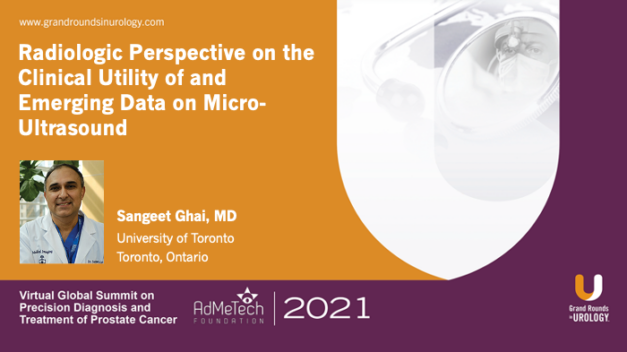Updates of Changes in the Early Detection of Prostate Cancer NCCN Guidelines 2021
Preston C. Sprenkle, MD, Associate Professor of Urology at Yale University School of Medicine in New Haven, Connecticut, offers an update of changes in the National Comprehensive Cancer Network (NCCN) guidelines for 2021 regarding the early detection of prostate cancer. Dr. Sprenkle first explains the rationale behind the early detection of prostate cancer guidelines, with the NCCN recognizing that prostate cancer is a spectrum of disease, that early detection is for men who opt-in to screening, and that early detection allows for treatment of aggressive cancer, realizing the challenge of not treating indolent disease. Dr. Sprenkle then displays a schematic to outline the format and elements of the NCCN guidelines before highlighting some changes made since 2020. The revised guidelines clarify language regarding race and ancestry as well as germline mutations. The revisions strengthen statements supporting the use of magnetic resonance imaging (MRI), reflecting an understanding that the benefit of MRI fusion prostate biopsy is clear and that data on multi-parametric (mp)MRI are no longer simply “emerging.” Additionally, the new recommendations remove the prostate cancer antigen 3 gene (PCA3) from the list of recommended biomarkers that further define risk. Guidelines now also recommend that high-grade prostatic intraepithelial neoplasia (HGPIN) be treated as benign disease. Dr. Sprenkle emphasizes that while these 2021 guidelines do not introduce major changes, the addition in 2020 of intraductal carcinoma (IDC) as a concerning pathological feature was a major change that merits continued attention.
Read More



